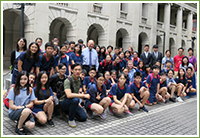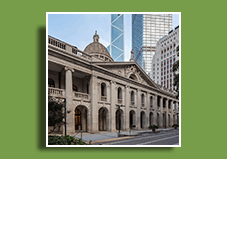| |
Following tradition, the year began with the Ceremonial Opening of the Legal Year on 8 January. The Hon Chief Justice Geoffrey MA spoke about the common law system being in place in Hong Kong for nearly 180 years as vital to the continuing success of Hong Kong. The use of case law, which is one of the features of the common law, relies fundamentally on the courts providing reasoned judgments for cases. In Hong Kong, the independent Judiciary exercises judicial power under the Basic Law to apply the law and determine legal disputes. The enforcement of law carries with it the power of imposing legal sanctions. With such responsibilities on the Judiciary, the Hong Kong’s common law system is underpinned by its transparency, enabling members of the public to observe court proceedings and gain access to court judgments. Its significance lies in helping the community scrutinize every judgment of the courts and see for themselves that the judgments of the courts are arrived at only by applying the law, without any outside, non-legal factors being taken into account. He also spoke about the importance of making comments about the work of the Judiciary on an informed basis as any unwarranted criticisms made against the rule of law cannot be of any benefit to the community.
|
|
|
| |
The Chief Justice also stressed the total commitment of the Judiciary in Hong Kong to serve the community as best as it possibly can.
|
|
|
 | Court security |
| |
The Judiciary has all along attached great importance to court security and has kept security measures under regular review to ensure the safety of JJOs, Judiciary staff, court users and the public. Subsequent to the introduction of security screening in the Family Court in November 2017, security screening has also been implemented in the High Court Building on court floors at LG/4F, and from 1/F to 14/F since January 2018. The Judiciary has also increased liaison with the Police to deploy additional police officers at the High Court, the DC and the Family Court. The Judiciary will continue to monitor the situation and introduce further measures to enhance the security of court premises where practical having regard to operational needs and user convenience.
|
|
 |
 | Boards and Committees |
| |
The Chief Justice appointed JJOs and invited representatives from the legal profession and relevant government departments to sit on a number of boards and committees to provide their input to issues that are important to the operation of the Judiciary. These boards and committees include the Civil Justice Reform Monitoring Committee, Working Party on Mediation, Admiralty Court Users’ Committee, Civil Court Users’ Committee, Criminal Court Users’ Committee, Family Proceedings Court Users’ Committee, Competition Tribunal Users’ Committee, Sub-Committee on Companies and Insolvency Matters of the Civil Court Users’ Committee and the Governing Body of the Hong Kong Judicial Institute.
|
|
 |
 | Visits and Visitors to the Judiciary |
| |
In 2018, the Judiciary arranged 339 visits for about 9600 visitors. Among all, most visitors are local students. We greatly value all opportunities to meet with visitors and introduce to them the work of the Judiciary.
|  |
|
|
| |
You are cordially invited to visit our Photo Gallery for various memorable moments of the Judiciary in 2018.
|
|
 |
|



